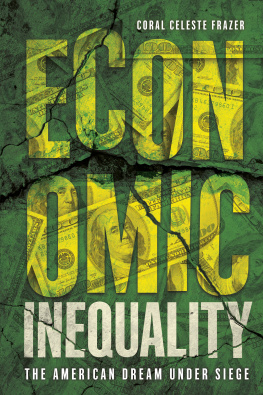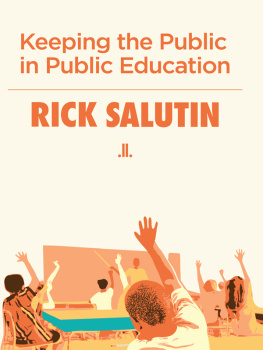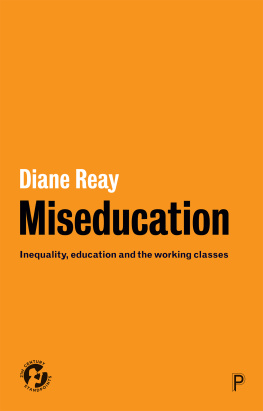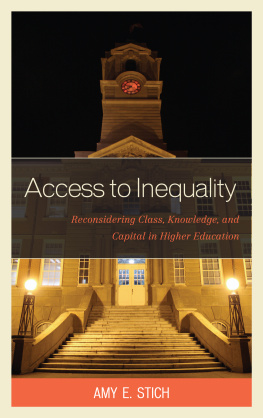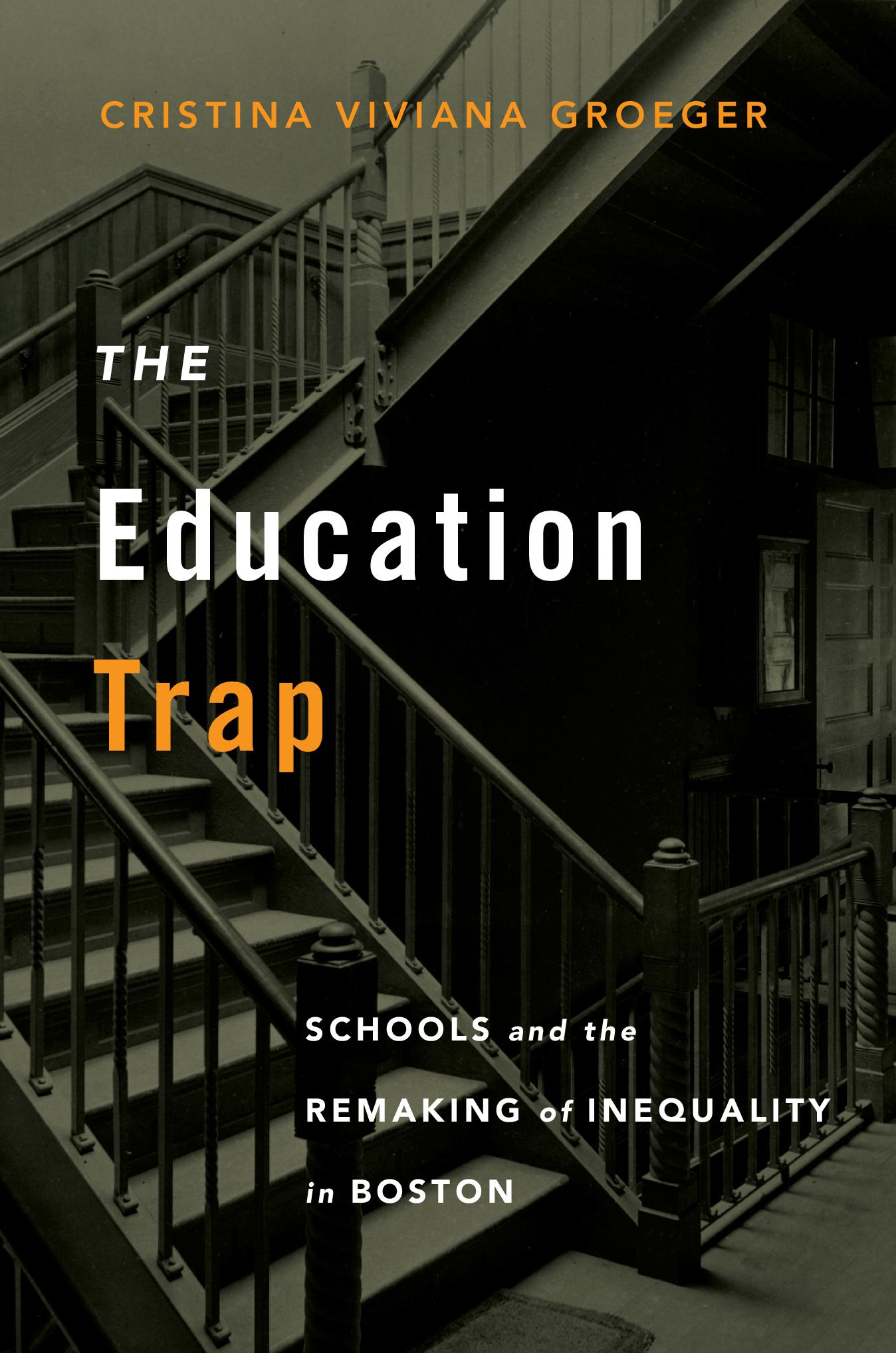Education Trap
Schools and the Remaking of Inequality in Boston
Cristina Viviana Groeger
Harvard University Press
Cambridge, Massachusetts London, England 2021
Copyright 2021 by the President and Fellows of Harvard College
All rights reserved
Publication of this book has been supported through the generous provisions of the Maurice and Lula Bradley Smith Memorial Fund.
Jacket design: Graciela Galup
Jacket art: Dorchester High School circa 1901, City of Boston Archives. Photographer: A. H. Folsom
978-0-674-24911-0 (cloth)
978-0-674-25915-7 (EPUB)
978-0-674-25916-4 (PDF)
The Library of Congress has cataloged the printed edition as follows:
Names: Groeger, Cristina Viviana, 1986 author.
Title: The education trap : schools and the remaking of inequality in Boston / Cristina Viviana Groeger.
Description: Cambridge, Massachusetts : Harvard University Press, 2021. | Includes bibliographical references and index.
Identifiers: LCCN 2020042443
Subjects: LCSH: Economic developmentEffect of education onMassachusettsBostonHistory. | Labor supplyEffect of education onMassachusetts BostonHistory. | EqualityMassachusettsBostonHistory. | Income distributionMassachusettsBostonHistory. | Occupational training MassachusettsBostonHistory.
Classification: LCC HD75.7 .G76 2021 | DDC 306.3/60974461dc23
LC record available at https://lccn.loc.gov/2020042443
To my parents, Margarita and Chris, who first taught me that learning happens everywhere, not just in school
Contents
The great equalizer. In the mid-nineteenth century, thats how Horace Mann, the leading promoter of public schools, described education in the United States.
The evidence, however, points to a fundamental paradox. The United States has long had among the highest rates of school enrollment and graduation in the world. Even though Americans are attending school at comparatively high rates, the US economy is increasingly polarized between a wealthy few and the rest. In short, high levels of education coexist with high levels of inequality. If Horace Mann were right, this could not be true.
At a time when half of Americans live paycheck to paycheck while the wealth of some CEOs increases by millions of dollars an hour, the gross inequalities of our contemporary moment have spurred interest in the sources of these disparities, and in remedies for them. But nearly a century earlier, at a time when educational enrollment was surging and schools made up the largest public expenditure, social inequality reached heights similar to our own. This book turns our attention to this early twentieth-century moment. As a case study in which to explore the paradox of expanding access to education and persistent inequality, it focuses on the city of Boston, famously home to many institutions of learning and a wealthy patrician elite. Based on the historical evidence, I argue that education became a central means of social mobility at the same moment that it became a new infrastructure for legitimizing social inequality. While providing economic opportunities to some workers, the expansion of schooling actually undercut the power of others. By obscuring the broader question of worker power in the economy, a focus on education as the primary means to remedy economic inequality became a pernicious policy trap.
This book explains the seemingly paradoxical role of education by analyzing the intertwined growth of the US educational system (primary, secondary, and higher) and the modern corporate economy in the city of Boston between 1880 and the Great Depression. In this period of rapid economic transformation, formal education reshaped the occupational structure and became a medium through which inequalities were remade and legitimated. Fundamental to this process was the transformation of pathways into employment from workplace training to school-based training. In the late nineteenth century, training for work was decentralized and loosely regulated. Few stayed in school beyond the primary grades and even professionals such as lawyers did not typically attend specialized schools. Most accessed jobs through informal family and ethnic ties and learned occupational skills on the job. Between 1880 and 1930, conflict and coalitions between a variety of interest groupsemployers, unions, government officials, professional associations, educators, parents, and studentsreshaped the training pathways leading into occupations. This was a contradictory process of both opportunity and exclusion rather than a simple story of educational expansion bringing greater equality.
The Education Trap lays out two parallel transformations that together restructured labor markets and training in this period. Schools intended to train workers for low-wage and industrial jobs never successfully structured access into this work. Despite the dogged efforts of progressive reformers to use vocational training to elevate the status of low-wage occupations, those who performed these jobsoverwhelmingly recent immigrants and African Americansby and large chose not to enroll, whether for lack of time and interest or the failure of these programs to meet their needs. In manufacturing and the trades, conflict between employers and craft unions over control of craft skills and apprenticeship undermined new attempts at industrial education. The failure of industrial education for the trades and manufacturing encouraged employers to seek labor sources that were less costly and less subject to craft-union control.
Among these new labor sources were white-collar employees. In contrast to the failure of school-based vocational training for low-wage and industrial work, schools that offered training for new business employment attracted thousands of students. Office and sales jobs were the fastest-growing occupations in the early twentieth-century economy, and schools that provided pathways into this work garnered tremendous support from students, employers, and public officials across the political spectrum. Competition between public schools and proprietary schools (private establishments run by a proprietor to make a profit) fueled unprecedented school expansion and the rapid rise of clerical and managerial staff in corporate bureaucracies. For many studentsespecially women, working-class students, and second-generation immigrantsthese schools provided social mobility, fueling faith in education as a central tenet of the American dream. However, this expansion provoked a reaction among Bostons elite, who pursued professional strategies based on exclusive credentials obtained at degree-granting colleges and universities to control access to the most lucrative positions. Through the successful marriage of elite universities and the most well-paid professional and business careers, formal education became a means of intensifying existing concentrations of wealth and power.
By the early twentieth century, formal education allowed previously underrepresented groups to grasp higher rungs on the occupational ladder, eroding elements of the nineteenth-century kinship-based labor market. However, the transformation of these decades reveals the significant limits of education as a means of reducing inequality. Existing gender, ethnic, and racial hierarchies in the labor market were reproduced alongside and through an expanding school system. Moreover, employers used school-based training to consolidate power over workers. The failure of industrial education and the success of white-collar education were in fact two sides of the same coin. Employers undercut the basis of craft-union power by pursuing mass production, shifting their workforce away from craftworkers and toward nonunionized machine operatives and educated white-collar staff. At the top of the economic hierarchy, elites used exclusive educational credentials to secure the power of a professional, managerial class. In response to the influx of women and second-generation immigrants into the white-collar workforce, this work differentiated into high schooleducated female clerical and retail workers supervised by a small number of college-educated male managers. Institutionally, public schools displaced some for-profit competitors but also laid the foundation for the expansion of private higher education, the advantages of which accumulated at the top.


